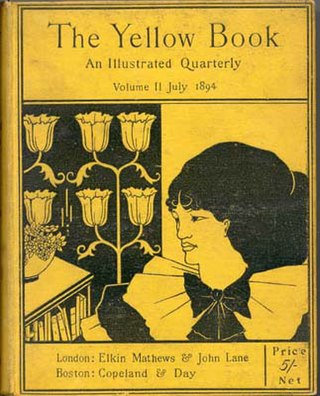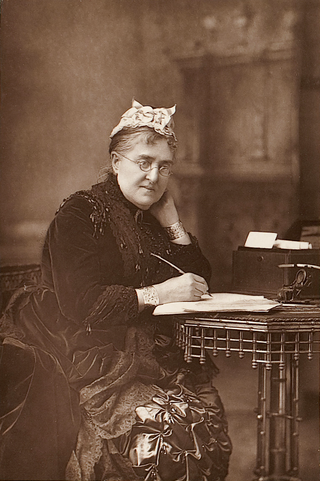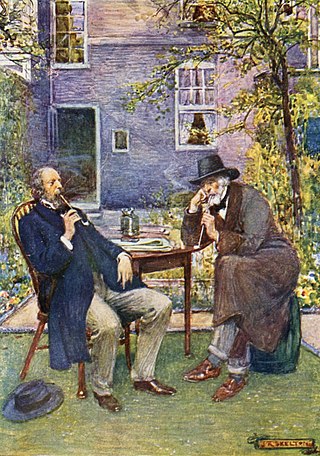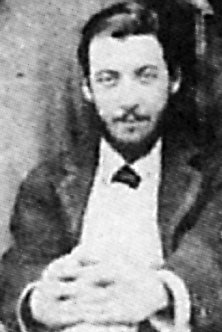
The Woman's World was a Victorian women's magazine published by Cassell between 1886 and 1890, edited by Oscar Wilde between 1887 and 1889, and by Ella Hepworth Dixon from 1888.[ citation needed ].

The Woman's World was a Victorian women's magazine published by Cassell between 1886 and 1890, edited by Oscar Wilde between 1887 and 1889, and by Ella Hepworth Dixon from 1888.[ citation needed ].
In the late nineteenth century, the market for periodicals was growing, and interest from women, who had always been the larger part of the market for fiction, increasing. Cassell and Co. launched a new magazine, The Lady's World in October 1886, intended to appeal to an aspirant middle-class audience of lady readers. [1] It concentrated on fashion and trends among high society. Impressed by Wilde's journalism on the Pall Mall Gazette , Wemyss Reid, the General Manager of Cassell & Co., wrote to Wilde in April 1887, enclosing several copies of the magazine. Wilde replied interestedly and suggested possible changes to the magazine. In May, he signed a contract for the editorship to work two mornings a week and paid a weekly salary of £6. [2]
Wilde persuaded the publisher to change the title to The Woman's World, [3] the change of description indicated it positioned itself towards an emerging class of educated women reflecting their changing place in society: Wilde designed it as "the first social magazine for women". [4] Stephen Calloway and David Colvin characterized the change as one which eliminated connotations of "bas-bourgeois snobbery and reflected his advanced views on female emancipation". [5] The titular change was part of a wider strategy of focusing more on what women "think and feel" and not exclusively on what they wear. [4]
Serious articles about women in education and politics accompanied style and society notes, short fiction and poetry and biographical pieces on famous, usually aristocratic, women. The Woman's World addressed an élite but expanding readership of middle and upper class educated women with literary and social credentials. [6]
Wilde managed to entice contributions from well-known writers and distinguished figures including, Elisabeth of Wied (the Queen of Romania), Princess Christian and Marie Corelli. He even asked Queen Victoria to submit poems, but was refused. The magazine continued to publish articles on high society trends and fashion, but with a more artistic slant. Sarah Bernhardt wrote an essay on "The history of my tea gown", and Wilde offered to write an article in her name about her American tour. [5] Charles Ricketts also contributed.
Wilde wrote a column of literary notes and responses to readers. At one point he had to defend himself against early animal rights activists who objected his promotion of the "wearing of dead animals" in his fashion notes. [7]
Wilde soon tired of his editorial work and often failed to turn up for work or attend meetings with the publishers. As a result, he was dropped as editor, but the magazine was unable to continue without him.
Clayworth, A. (1997) "The Woman's World: Oscar Wilde as Editor" Victorian Periodicals Review, Vol. 30, No. 2 (Summer, 1997), pp. 84–101. Johns Hopkins University Press on behalf of the Research Society for Victorian Periodicals

Oscar Fingal O'Fflahertie Wills Wilde was an Irish poet and playwright. After writing in different forms throughout the 1880s, he became one of the most popular playwrights in London in the early 1890s. He is best remembered for his epigrams and plays, his novel The Picture of Dorian Gray, and his criminal conviction for gross indecency for homosexual acts.

The Importance of Being Earnest, a Trivial Comedy for Serious People is a play by Oscar Wilde. First performed on 14 February 1895 at the St James's Theatre in London, it is a farcical comedy in which the protagonists maintain fictitious personae to escape burdensome social obligations. Working within the social conventions of late Victorian London, the play's major themes are the triviality with which it treats institutions as serious as marriage and the resulting satire of Victorian conformity. Some contemporary reviews praised the play's humour as the culmination of Wilde's artistic career, while others were cautious about its lack of social messages. Its high farce and witty dialogue have helped make The Importance of Being Earnest a very popular play.

The Picture of Dorian Gray is a philosophical novel by Irish writer Oscar Wilde. A shorter novella-length version was published in the July 1890 issue of the American periodical Lippincott's Monthly Magazine. The novel-length version was published in April 1891.

John Sholto Douglas, 9th Marquess of Queensberry, was a British nobleman of the Victorian era, remembered for his atheism, his outspoken views, his brutish manner, for lending his name to the "Queensberry Rules" that form the basis of modern boxing, and for his role in the downfall of the Irish author and playwright Oscar Wilde.

Aubrey Vincent Beardsley was an English illustrator and author. His black ink drawings were influenced by Japanese woodcuts, and depicted the grotesque, the decadent, and the erotic. He was a leading figure in the aesthetic movement which also included Oscar Wilde and James McNeill Whistler. Beardsley's contribution to the development of the Art Nouveau and poster styles was significant despite his early death from tuberculosis. He is one of the important Modern Style figures.

Jane Francesca Agnes, Lady Wilde was an Irish poet under the pen name Speranza and supporter of the nationalist movement. Lady Wilde had a special interest in Irish folktales, which she helped to gather and was the mother of Oscar Wilde and Willie Wilde.

The Yellow Book was a British quarterly literary periodical that was published in London from 1894 to 1897. It was published at The Bodley Head Publishing House by Elkin Mathews and John Lane, and later by John Lane alone, and edited by the American Henry Harland. The periodical was priced at 5 shillings and lent its name to the "Yellow Nineties", referring to the decade of its operation.

George Meredith was an English novelist and poet of the Victorian era. At first, his focus was poetry, influenced by John Keats among others, but Meredith gradually established a reputation as a novelist. The Ordeal of Richard Feverel (1859) briefly scandalised Victorian literary circles. Of his later novels, the most enduring is The Egoist (1879), though in his lifetime his greatest success was Diana of the Crossways (1885). His novels were innovative in their attention to characters' psychology, and also portrayed social change. His style, in both poetry and prose, was noted for its syntactic complexity; Oscar Wilde likened it to "chaos illumined by brilliant flashes of lightning". Meredith was an encourager of other novelists, as well as an influence on them; among those to benefit were Robert Louis Stevenson and George Gissing. Meredith was nominated for the Nobel Prize in Literature seven times.

Eliza Lynn Linton was the first female salaried journalist in Britain and the author of over 20 novels. Despite her path-breaking role as an independent woman, many of her essays took a strong anti-feminist slant.

Amy Judith Levy was an English essayist, poet, and novelist best remembered for her literary gifts; her experience as the second Jewish woman at Cambridge University, and as the first Jewish student at Newnham College, Cambridge; her feminist positions; her friendships with others living what came later to be called a "New Woman" life, some of whom were lesbians; and her relationships with both women and men in literary and politically activist circles in London during the 1880s.

Victorian literature is English literature during the reign of Queen Victoria (1837–1901). The 19th century is considered by some to be the Golden Age of English Literature, especially for British novels. It was in the Victorian era that the novel became the leading literary genre in English. English writing from this era reflects the major transformations in most aspects of English life, from scientific, economic, and technological advances to changes in class structures and the role of religion in society. The number of new novels published each year increased from 100 at the start of the period to 1000 by the end of it. Famous novelists from this period include Charles Dickens, William Makepeace Thackeray, the three Brontë sisters, Elizabeth Gaskell, George Eliot, Thomas Hardy, and Rudyard Kipling.
Woman's World is an American supermarket weekly magazine.

Louise Jane Jopling was an English painter of the Victorian era, and one of the most prominent female artists of her generation.

William Charles Kingsbury Wilde was an Irish journalist and poet of the Victorian era. He was the older brother of Oscar Wilde.

George Charles Haité was an English designer, painter, illustrator and writer. His most famous work is the iconic cover design of the Strand Magazine, launched in 1891, which helped popularise the Sherlock Holmes stories of Arthur Conan Doyle. Haité was also a founder member and the first president of the London Sketch Club.

The Englishwoman's Domestic Magazine (EDM) was a monthly magazine which was published between 1852 and 1879. Initially, the periodical was jointly edited by Isabella Mary Beeton and her husband Samuel Orchart Beeton, with Isabella contributing to sections on domestic management, fashion, embroidery and even translations of French novels. Some of her contributions were later collected to form her widely acclaimed Book of Household Management. The editors sought to inform as well as entertain their readers; providing the advice of an 'encouraging friend' and 'cultivation of the mind' alongside serialised fiction, short stories and poetry. More unusually, it also featured patterns for dressmaking.
C.E. Humphry (1843–1925), who often worked under the pseudonym "Madge", was a well-known journalist in Victorian-era England who wrote for and about issues relevant to women of the time. She wrote, edited and published many works throughout her career and is perhaps best known for originating what was known as the "Lady's Letter"-style column she wrote for the publication Truth, read throughout the British Empire. She was one of the first woman journalists in England.

The Lady's Realm was a British women's magazine published from 1896 until 1914, possibly until 1915. It primarily targeted upper-class readers as well as an aspirational middle-class audience, featuring photographs, poems, fiction, and columns by popular authors such as Marie Corelli, Frances Hodgson Burnett, Jack London, and H. G. Wells. The London Season was regularly covered, with visuals of significant society figures and débutantes appearing. Fashion trends in Paris and London were frequently discussed as well, particularly by its fashion editor Marian Pritchard.

Ada Sarah Ballin was an English author, journalist, editor, and lecturer. She was the editor and proprietor of the magazines Baby, Womanhood and Playtime, and published articles and books on health, child care, and dress reform.
Laura Elizabeth Rachel Troubridge was a British diarist, letter-writer, artist and illustrator. A professional artist from an aristocratic background, she was known for her portraits of Queen Victoria and her family, and paintings of children and fairy subjects, generally in watercolour and pastel. Her book illustrations were admired by Oscar Wilde and Charles Dodgson. In 1966, her journals, giving an insight into Victorian life; and in 2000 correspondence with her fiancé during the period of their engagement, were published.
![]() Media related to The Woman's World at Wikimedia Commons
Media related to The Woman's World at Wikimedia Commons